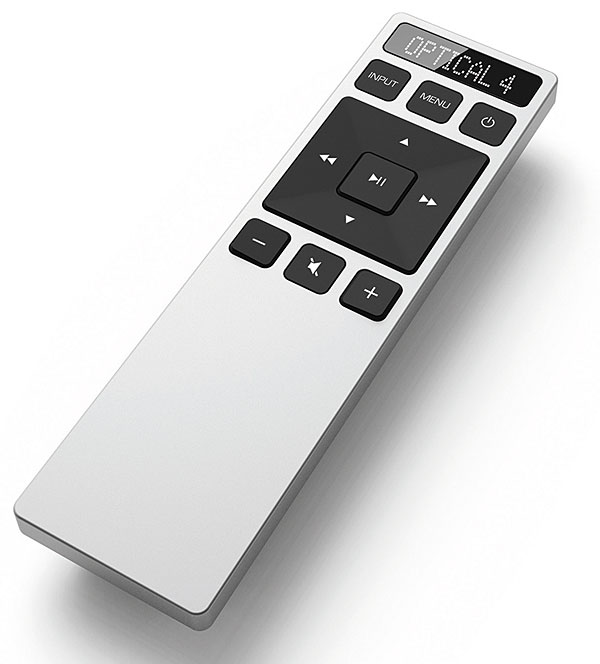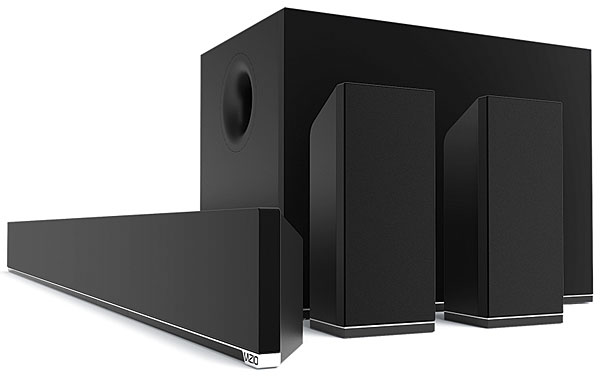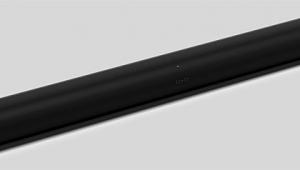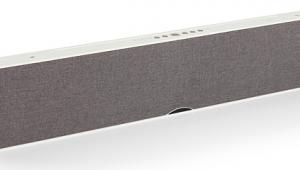Great review. I happen to have two of these bars, my only concern about them was that you had to put subwoofer behind, in order for the satellite speakers to be connected since the cable length is very limited. How did you manage to accomplish your setup? How did you hide the RCA extensions?
Vizio S5451w-C2 Soundbar System Page 2
For Beginners
Thus installed, here’s how the Vizio might impress a listener whose frame of reference is onboard TV sound, or perhaps the cheesy little speakers of a $199 HTIB system:
The Vizio throws a startlingly big image. Voices, especially male ones, are full and weighty, and the width of the sound from both stereo music and surround TV/movie programming is quite impressive and audibly better than that of most smaller (and cheaper) soundbars. The surround effect, both from standard Dolby Digital and DTS material (the S5451w-C2 does not, of course, decode Dolby TrueHD or DTS-HD Master Audio), is prodigious and large, producing an effectively you-are-there sense from such mundane programming as MLB games and network TV dramas; it even did a creditable job of enlarging the sound of a 1988 PBS/BBC Sherlock Holmes episode. (Jeremy Brett was, for my money, the best screen Holmes ever by a mile.) There’s only one surround option for upmixing two-channel material, Vizio Matrix Surround, which seemed to work decently.

The compact subwoofer produces powerful-sounding bass. It’s amply solid for pop music tracks, and it delivers satisfyingly deep rumbling from action-movie fare like explosions, or the famous train/bus crash in The Fugitive. Even complex orchestral recordings sound warm and full. And the system plays loud—vastly louder than any TV’s built-in speakers could even approach.
Thusly impressed, said beginner listener would not be wrong: The Vizio is in fact vastly better than any typical modern TV or low-cost HTIB.
Audiophile Perspective
But we demand a lot more, with the standard of, let us say, a good, $1,000-ish combo of 5.1 speakers/subwoofer and receiver. So here’s my own, fuller, jaded-audio-guy-lifer report:
The S5451w-C2 can still hold its head up. My overall impression was that the sound was indeed full and balanced, with impressive depth and breadth on surround material and an octave balance that on typical studio pop was very fair indeed. To the more critical ear, the cooperation between soundbar and subwoofer, most evident on male announcers or dialogue, remained a bit problematic. Placing the sub directly beneath the soundbar helped enormously, but a hint of discontinuity persisted, especially on deeper male speech. Interestingly, this depended to some extent on volume setting, taking on a boomier characteristic at louder overall settings and a more hollow or cupped one at quiet levels.
Thanks to its great width, the Vizio produces a real stereo effect even from a probable big-screen listening position, one that can also conjure up an unexpected soupçon of depth. At its default settings, the Vizio system’s surround channels are balanced quite strongly, making surround effects easily noticeable by one and all (I generally backed this off two or three clicks). I was surprised at how well the little 3-inch, one-way surrounds worked, especially after I had tilted them well back and aimed them inwards.
The soundbar itself seemed quite neutral through the midrange and lower-treble octaves, with comparatively little in the way of obvious colorations, so that both male and female singing voices, solo strings, and woodwinds all presented quite honestly. Well-recorded pop like Aimee Mann’s Bachelor No. 2 yielded a pleasant impression of treble presence—until I did a direct comparison with high-quality multi-driver speakers, when the soundbar’s lack of tweeters became painfully evident. There was little sheen or sparkle to sounds like brushed cymbals, hi-hat rides lacked their initial “tick,” and transients such as brass attacks, and overall air, were lacking by comparison. (But hey, it’s a $500 soundbar. With full-range drivers.)
At the opposite end, the sub’s 8-inch woofer proved rather more capable than many similarly sized units in HTIB or soundbar systems I’ve heard, and even some freestanding examples. At middle master-volume settings, it impressed me as extending substantially below 50 hertz, lending a satisfying touch of cinematic impact to the numberless crashes, explosions, body slams, and so on in a film like Live Free or Die Hard (a particular favorite of us here in New Hampshire). Top volume settings tended to impede extension a bit (probably some DSP limiting going on), and the woofer sounded a bit flabbier, but no obvious rude noises intruded.

The Vizio system overall played amply loud to suggest a real-cinema experience. It wasn’t quite true reference level, but much closer, without obvious distortion, than I expected—plenty to sound loud in my 22 x 16-foot studio, something a few more costly soundbars I’ve experienced have struggled to do. (That said, the top two volume settings could sound a bit coarsened, and audibly squished where generous bass was present, depending on the average level of the recording.) Surround effects were surprisingly well presented, and with the tiny surround speakers aimed upwards at the wall/ceiling junctions adjacent to the listening position, the overall system produced a better bubble of envelopment than some discrete-speaker surround systems I’ve heard, though they occasionally tended to localize loud, wider-range surround effects a bit.
The net effect on big-sound material like the aforementioned Bruce Willis action-fest was this: For the first 10 or 15 minutes, I tended to note the Vizio’s shortcomings. By audiophile standards, these included a bit of woofiness on big-bass effects, a definite lack of air and sparkle on treble-rich music and shattering glass, a very slight cupped quality to a few voices, and that vestigial localization of the subwoofer. But after that brief interval, I tended to forget about it and just watch the movie, occasionally noticing how gracefully the Vizio handled whatever material I directed to it.
Ergonomics
From the perspective of userfriendliness, the news is also mostly positive. The supplied remote is a small but usable handset, with a 10-character LCD (non-illuminated) that shows which function, from a scrollable list, is under command. (This is still only a one-way communicator, so if you don’t aim it adequately, it may not always tell the truth.) Instead of direct-access input keys, you scroll through the available options on the remote’s display and then hit the Enter button, a reasonable alternative. On the soundbar itself is a handsome horizontal array of pinpoint LEDs that denote setting magnitude, with centered double points illuminating at the zero point for balance controls, plus tiny Dolby and DTS logos that illuminate for a few seconds to confirm decoding mode. After a day or two of familiarization, I found the Vizio quite friendly indeed.
There’s also DTS’s volume-leveling feature, TruVolume. Oddly, invoking this incurred an enormous volume increase, on the order of 12 or 15 dB, which I can’t imagine is the desired effect. With the volume turned back down, however, TruVolume did effectively smooth average-level differences among TV/cable channels, and program versus commercial, at the cost of a slightly reduced-dynamics presentation.
The Vizio has the infrared programming option, usual among soundbars, that permits you to teach it basic commands from a familiar remote such as a TV or cable/sat-box handset, for single-remote use. (However, since it lacks the IR passthrough repeater that some soundbars feature, the Vizio must be located so as not to block the TV’s IR eye.) Also onboard is signal-sensing auto-on/off—as is, of course, Bluetooth wireless playback, compatible with aptX, the current higher-sound-quality standard. This paired easily and sounded about as expected via my iPhone—non-aptX, like all such.
Overall, I concluded that Vizio’s engineers, perfectly aware of their design’s cost- and size-induced limitations, were careful to work around them to maximize real-world, everyday efficacy. And in this they succeeded admirably; whether delivering a movie, a sitcom, or the evening news, the Vizio S5451w-C2 always sounded properly scaled and appropriate, and rarely drew attention to itself.
- Log in or register to post comments


I just got this soundbar and am in the process of installing it. I want to use a different set of surround speakers (Leviton AESS5) connected to the subwoofer. I would think that this is straightforward but the VIZIO support response says that only the supplied speakers will work (no details why though). Has anyone tried connecting different speakers to the subwoofer? What is the subwoofers output impedance? Any chance of frying the subwoofer or speakers?




































































